This Is How To Grow Muscari ‘Grape Hyacinth’ With Some Favourite Types To Try
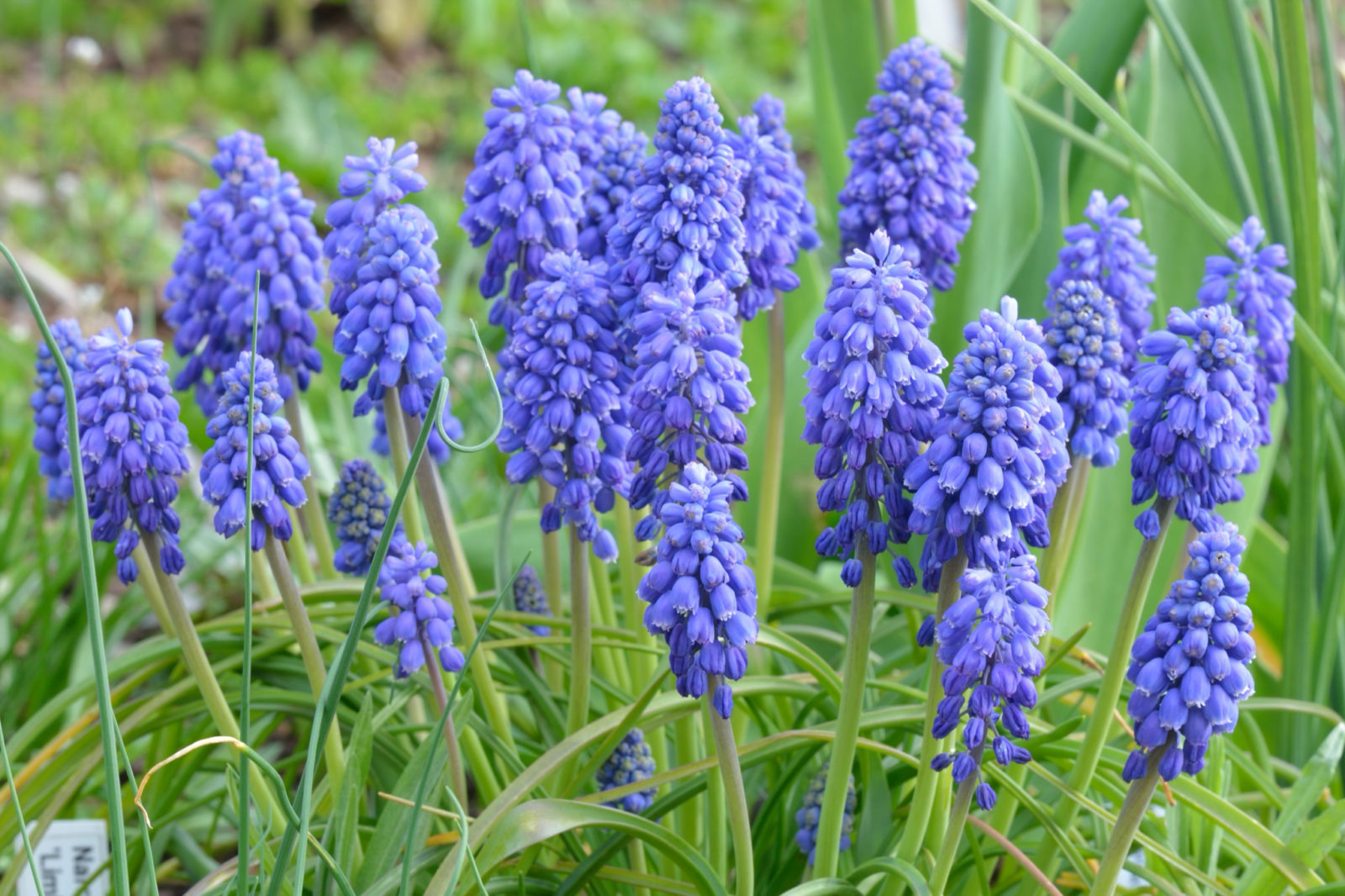
BULBS > MUSCARI

Elizabeth is a Permaculture Garden Designer, Sustainability Consultant and Professional Writer, working as an advocate for positive change. She graduated from the University of St. Andrews with an MA in English and Philosophy and obtained a Diploma in Applied Permaculture Design from the Permaculture Association.
Reviewed By COLIN SKELLY

Colin is a Horticulturist and Horticultural Consultant with experience in a range of practical and managerial roles across heritage, commercial and public horticulture. He holds the Royal Horticultural Society’s Master of Horticulture award and has a particular interest in horticultural ecology and naturalistic planting for habitat and climate resilience.
MUSCARI GUIDES
Muscaris are useful spring bulbs that can be grown in pots or containers, in a bed or border, or sometimes naturalised in lawn or meadow.
There are a number of different species of grape hyacinth to consider, some of which are best suited to specific locations in the garden.
They are relatively easy to care for but there are some important rules to follow when growing them in your garden – all of which we cover in more detail below.
Overview
| Botanical Name | Muscari |
| Common Name(s) | Grape Hyacinth |
| Plant Type | Bulb |
| Native Area | South Asia and North Africa |
| Hardiness Rating | H6 |
| Foliage | Deciduous |
| Flowers | Dense clusters of grape-like flowers |
| When To Plant | Autumn |
| When To Prune | After flowering |
Sunlight
Preferred
Full Sun or Partial Shade
Exposure
Exposed or Sheltered
Size
Height
0.1 – 0.5M
Spread
0 – 0.1M
Bloom Time
Spring
Soil
Preferred
Most fertile soils
Moisture
Moist but well-drained
pH
Any
Muscari is a genus of perennial bulbs which contain anywhere between 30-60 species.1Wraga, K., & Placek, M. (2013). Review of taxons from genus Muscari cultivated in Department of Ornamental Plants in Szczecin. Herba Polonica. Retrieved March 21, 2023, from http://www.herbapolonica.pl/magazines-files/4146481-Pages%20from%20Herba_3-47.pdf
This genus provides us with a number of spring bulbs grown as ornamental plants in UK gardens.
These are commonly known as grape hyacinths, named after their flowers, which, held on short dense spires, look a little bit like a bunch of grapes.

Although they have the word hyacinth in their common name, they are not closely related to hyacinths at all.
The genus originated in central and southern Europe, the Mediterranean basin, northern Africa and central, western and southwestern Asia and has since become naturalised elsewhere, including in Northern Europe and parts of the United States.2Mahr, S. (n.d.-d). Grape Hyacinth, Muscari armeniacum. Wisconsin Horticulture. Retrieved March 21, 2023, from https://hort.extension.wisc.edu/articles/grape-hyacinth-muscari-armeniacum/
Common Varieties
M. armeniacum
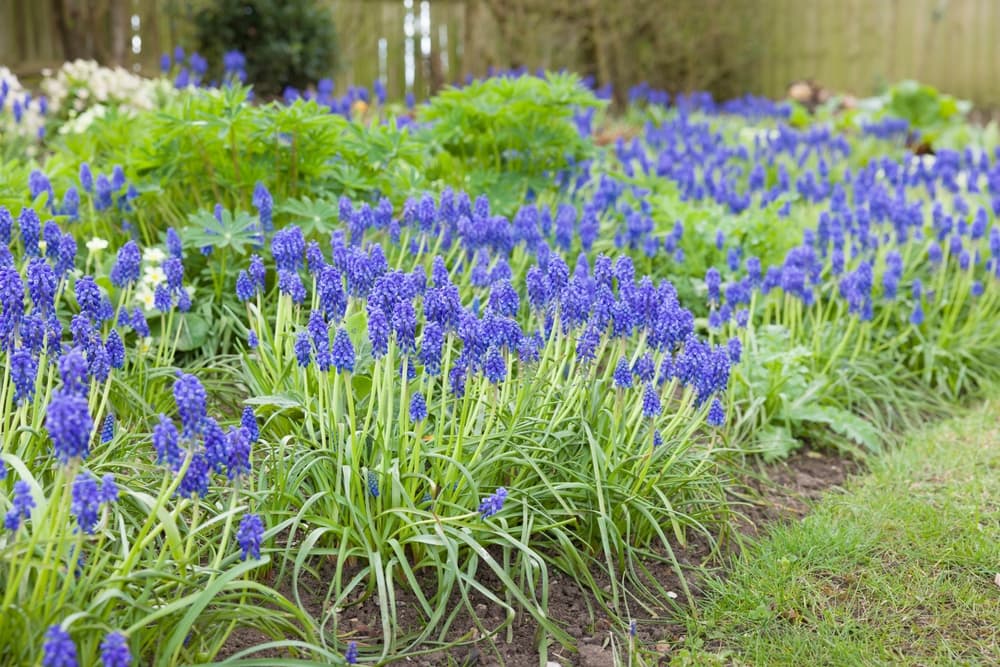
One of the popular species grown in the UK is Muscari armeniacum, from the east Mediterranean.
The flowers of this species can be purple, blue (sometimes with a white fringe), pink or white and they bloom in April and May.
M. armeniacum ‘Blue Spike’
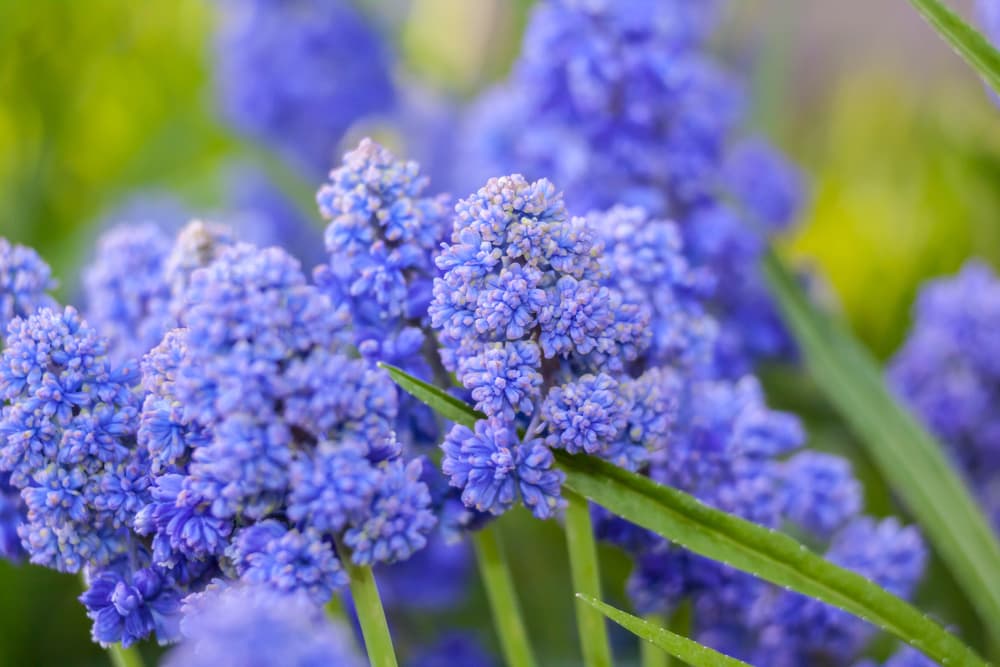
M. armeniacum ‘Blue Spike’ is a varietal with larger, double flowers and works well naturalised in grass or alongside other spring bulbs in a container display.
M. latifolium
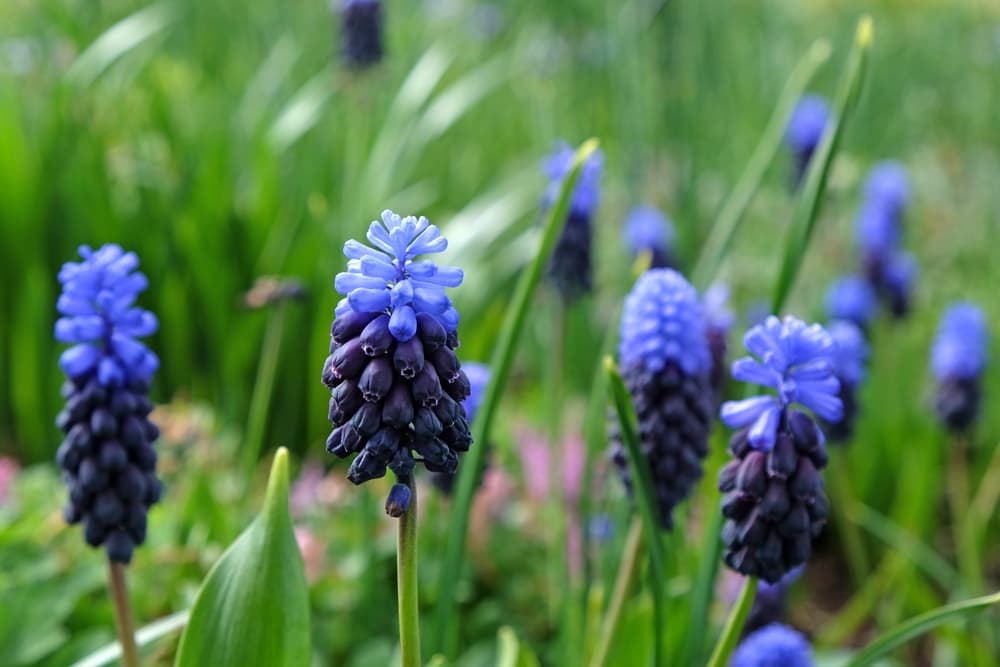
Another species commonly used as an ornamental is M. latifolium which is a broad-leaved hyacinth grape that has deep purple flowers in April and May.
M. aucheri

There is also M. aucheri, another spring bulb from Turkey – also a popular ornamental awarded an RHS Award of Garden Merit.
There are a number of named cultivars of this species available too.
There are many species and many named muscari bulbs used in UK gardens to choose from if you decide to grow a member of this genus.
How To Grow Muscari
Muscari is typically grown from bulbs, planted in autumn, though, as you will find out below, it is a plant that can also be propagated in a couple of other ways.
These spring bulbs can be planted at the front of a bed or border and look lovely along a lightly shaded pathway.
They also work well on a sunny or slightly shaded woodland or forest garden edge.
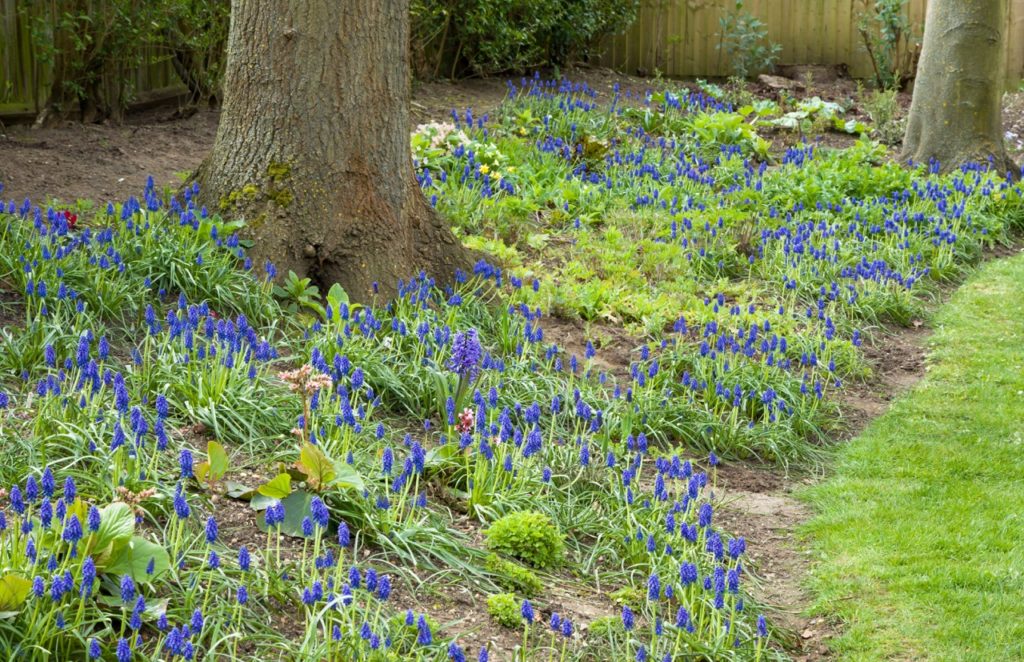
Muscari can be great as part of a wildlife-friendly planting scheme, since growing these spring ephemerals catches water and nutrients in the spring, and provides a nectar source for pollinators early in the year.
They spread easily, which can be delightful in some locations, but, of course, is not always wanted.
They can also be contained or also work in small spaces, as they are also suited to growing in pots or other containers.
You can plant them in containers on their own, but they also work very well planted in displays alongside other spring bulbs.
Grape Hyacinth Care Guidelines
Fortunately, these bulbs are very easy to care for and are pretty low-maintenance plants, so there is not a great deal that you will have to do.
Soil Requirements
The most important thing when growing muscari is to make sure that it is grown in moist but well-drained soil.
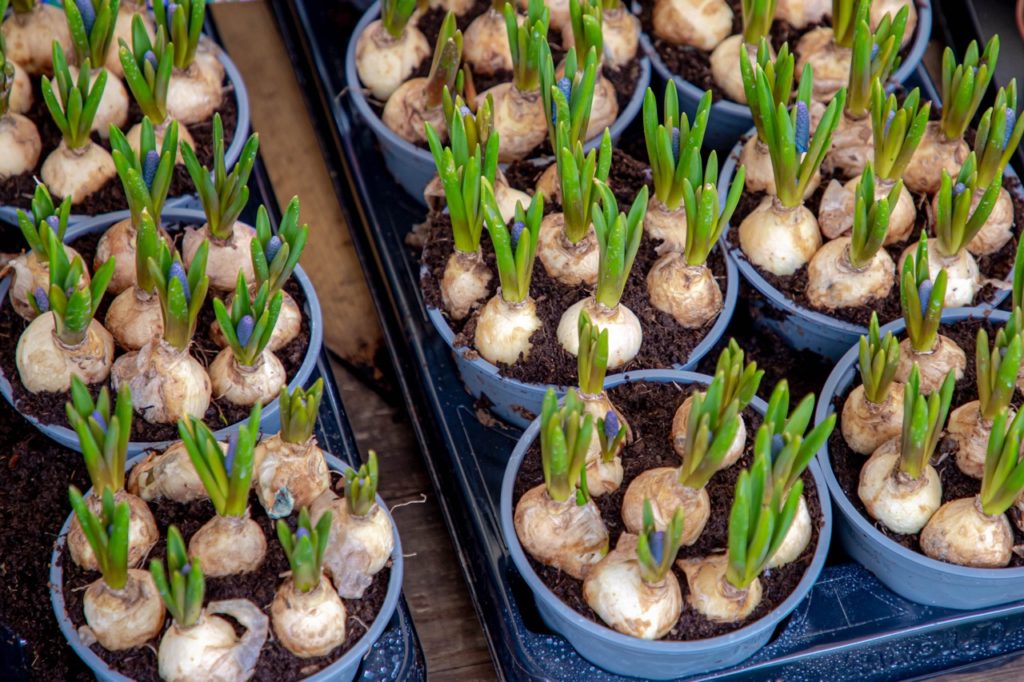
The soil type is less important, as grape hyacinth tends to be relatively unfussy in that regard, coping with a range of soils and pH levels.
However, these bulbous perennials will not thrive in waterlogged or overly damp conditions.
Watering
Grape hyacinths growing in the ground will typically not require watering, except perhaps during exceptionally long dry spells.
In containers, of course, you will need to keep up with watering through summer to make sure the growing medium does not dry out entirely.
Feeding
Muscari tends to do very well and spread without much intervention.
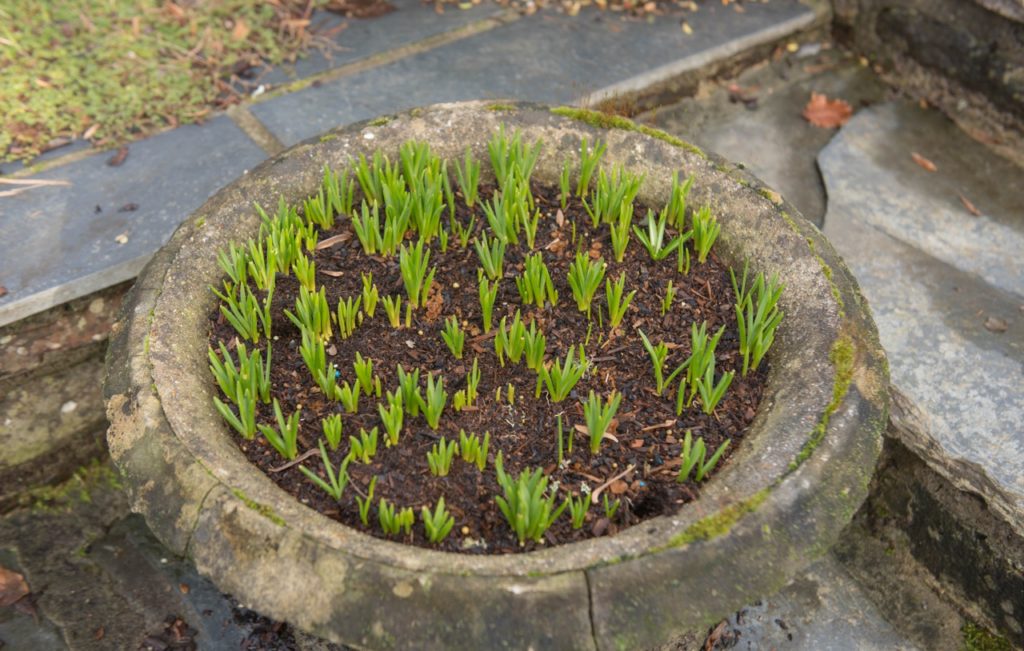
You will not usually have to worry about feeding them.
If you wish, you can mulch around the plants with organic matter and they should have all they need.
Pruning & Deadheading
If you wish, you can deadhead your muscari after flowering so that it does not set seed.
You should also lift and divide grape hyacinth while it is dormant over the summer months, to maintain the vigour of the plant and to limit its spread where desired.
“Without dividing clumps, Muscari would be rampant in my garden,” shares Colin Skelly, a Master Horticulturist.
“I tend to remove clumps whilst still in the green, so that I can still see where the bulbs are but after I’ve enjoyed the flowers.
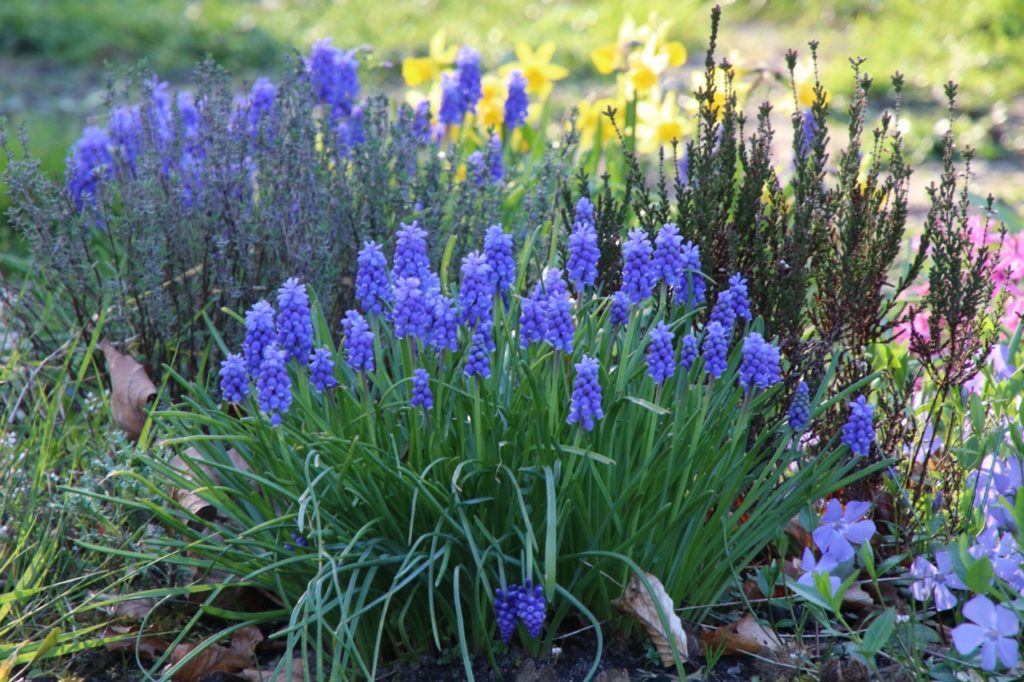
“These can be potted on or replated elsewhere. I think they look best where they can be allowed to run free, particularly under deciduous trees and shrubs.
“They are also great in pots, either on their own or in a bulb lasagne.”
At the end of the season, some people will cut away dead and dying foliage in autumn, but you can simply leave these alone, as this is usually simply for aesthetics on the whole.
Leaving perennial foliage in place through the autumn and winter is also better for the wildlife in your garden.
Propagating
Though muscari is usually grown from bulbs, it can also be propagated by means of division in summer, and also by saving seed and sowing it in spring, though this latter option is not really worthwhile since the other two options are so much easier.
Common Problems
Grape hyacinth is generally untroubled by pests and disease, as this really is an easy crop to grow.
However, it can sometimes be affected by viruses.
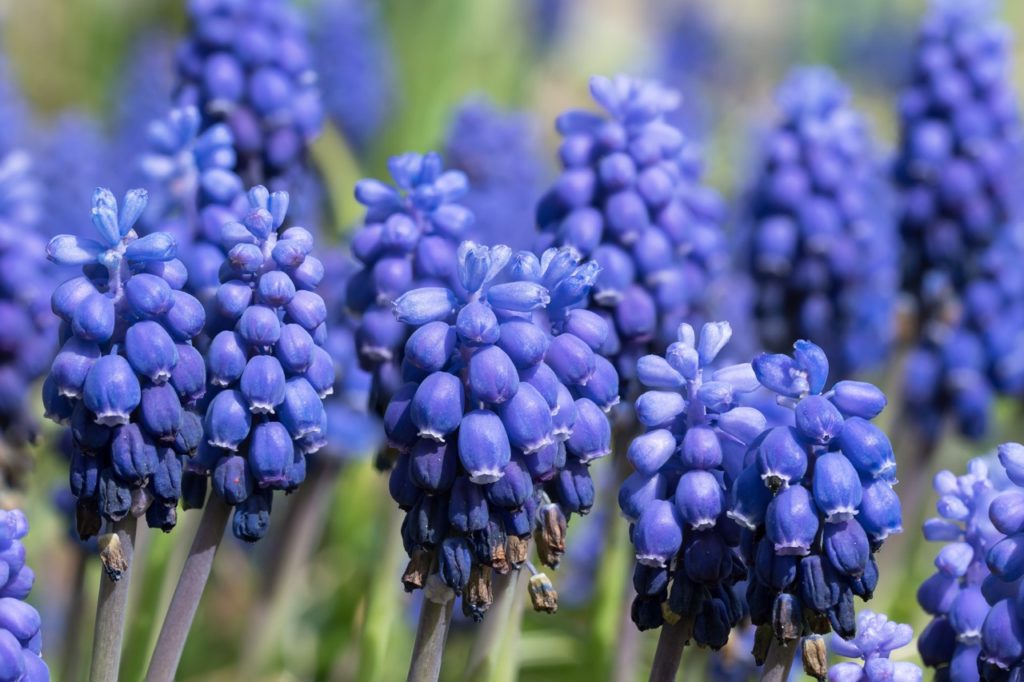
The most common issues arise not due to a pest or disease, however, but due to unsuitable environmental conditions.
These bulbous perennials will not thrive in an area where the ground becomes too wet and waterlogged.
If grown in an overly damp location, the bulbs may rot.
References
- 1Wraga, K., & Placek, M. (2013). Review of taxons from genus Muscari cultivated in Department of Ornamental Plants in Szczecin. Herba Polonica. Retrieved March 21, 2023, from http://www.herbapolonica.pl/magazines-files/4146481-Pages%20from%20Herba_3-47.pdf
- 2Mahr, S. (n.d.-d). Grape Hyacinth, Muscari armeniacum. Wisconsin Horticulture. Retrieved March 21, 2023, from https://hort.extension.wisc.edu/articles/grape-hyacinth-muscari-armeniacum/
